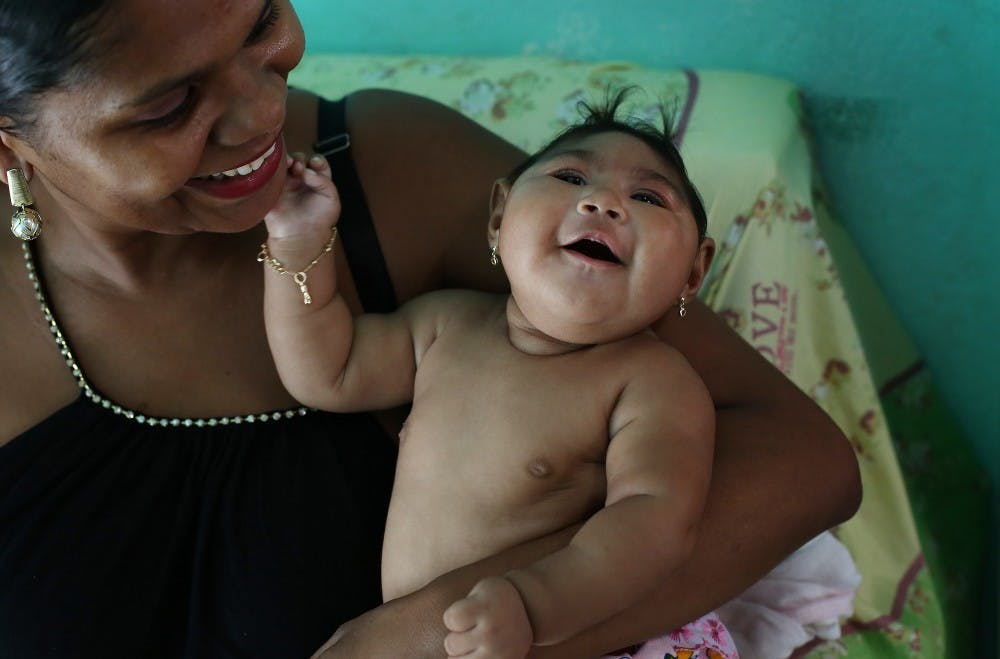Located closer to Central and South America than most states and already with a history of mosquito-borne illnesses, Arizona is in something of a vulnerable position when it comes to the Zika virus.
The virus was first isolated in 1947, though the first outbreak did not occur until 2007. Now, an outbreak in the Americas and islands across the Pacific Ocean has led the World Health Organization to declare a public health emergency and has catapulted the virus to international infamy — in part due to its linkage to microcephaly, a birth defect resulting in an abnormally small head.
That said, Arizona, or anywhere else in the United States, has yet to experience an active outbreak — only isolated cases from individuals who had travelled to Zika-active areas. However, that is not to say that there is no reason for concern.
"I think some of the panic (about Zika) is overblown," said Craig Levy, an epizoologist with the Maricopa County Department of Public Health. "But I think it's totally warranted to be prepared, and we'd need to be prepared to stop a local outbreak."
Although it is possible for a local outbreak to develop in Maricopa County, the chances are slim, and the chances of a serious outbreak to develop are even slimmer, he said.
"Overall, we have good home construction and air conditioning, so it tends to reduce pretty bad outbreaks of the disease," Levy said.
The area has dealt with similar imported diseases like Dengue fever for years without a local outbreak, and the infrastructure in place for battling illnesses like Dengue, West Nile virus and Chikungunya has also helped combat Zika.
The county has Aedes aegypti mosquito populations under surveillance, though insofar, none has carried the virus, Levy said.
Levy said there's a significant demand for testing of the illness: At least 140 people have been tested in the county so far, and over 100 cases have already been ruled out. It is at the point that the county has to triage requests for testing before the cases are sent to state laboratories.
Arizonans can go a long way in ensuring the virus does not occur organically by eliminating still water in their yards in containers like buckets, tires or canoes, and turning those containers over so rain or sprinkler water cannot build up inside.
Levy said the county encountered one tire with some standing water inside, for example, with over 1,000 mosquito larvae.
Arizona State University has also been key in fighting the Zika virus, as with Alexander Green, an associate professor at the Biodesign Institute who recently made news as part of a scientific team that developed a low-cost test for the Zika virus — just one dollar a pop.
"The test searches for bar codes in the RNA sequence of the Zika virus," Green said. "We can look at the sequence of RNA and use that to determine if Zika has infected the body."
The test works by taking a blood sample and using different chemical reactions to amplify the RNA sequence, and then reacting that sample with chemicals on a piece of paper. If a certain color appears on the paper, then the virus is present in the sample.
Green said the test mostly consists of tried-and-true techniques, but that the sensor for detecting the virus was his invention.
"We were able to use a set of molecular tools in a way that it hadn't been used before," he said.
The same type of diagnostic test can be used for all viruses with RNA or DNA, he said.
Brenda Hogue is a molecular biologist and also an associate professor in the Biodesign Institute who researches viral replication and structures to help develop vaccines and antiviral medicines. She served on a panel about understanding the Zika outbreak in February of this year.
"We're gearing up to express some of the proteins that make up part of Zika particles," Hogue said.
This would allow more in-depth analysis of the patterns and structures of the virus, which would in turn facilitate a vaccine.
"In the field in general, in addition to looking for vaccines, they're really trying to understand this virus in terms of how it interacts with hosts and how it causes some of the symptoms we are seeing, as in microcephaly," she said.
Hogue said many of the tools used to combat previous viruses, such as amplifying DNA or RNA chains in the virus to better understand it, are already in place, and scientific teams have already developed significant experience in responding quickly to rapidly spreading viruses in order to obtain that information.
"I think we need to be cognizant of the fact that there is potential for the virus to be introduced to the area, but there is certainly no need for a panicked response," Hogue said.
Reach the reporter at Arren.Kimbel-Sannit@asu.edu or follow @akimbelsannit on Twitter.
Like The State Press on Facebook and follow @statepress on Twitter.




